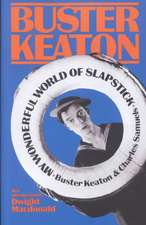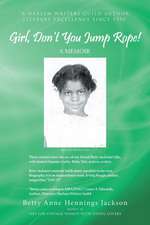Buster Keaton: Interviews: Conversations with Filmmakers (Paperback)
Editat de Kevin W. Sweeneyen Limba Engleză Paperback – 30 apr 2007
Din seria Conversations with Filmmakers (Paperback)
-
 Preț: 191.88 lei
Preț: 191.88 lei -
 Preț: 192.12 lei
Preț: 192.12 lei -
 Preț: 175.55 lei
Preț: 175.55 lei -
 Preț: 169.40 lei
Preț: 169.40 lei -
 Preț: 137.55 lei
Preț: 137.55 lei -
 Preț: 192.72 lei
Preț: 192.72 lei -
 Preț: 237.54 lei
Preț: 237.54 lei -
 Preț: 241.01 lei
Preț: 241.01 lei -
 Preț: 236.93 lei
Preț: 236.93 lei -
 Preț: 242.33 lei
Preț: 242.33 lei -
 Preț: 235.79 lei
Preț: 235.79 lei -
 Preț: 238.69 lei
Preț: 238.69 lei -
 Preț: 234.64 lei
Preț: 234.64 lei -
 Preț: 233.67 lei
Preț: 233.67 lei -
 Preț: 221.79 lei
Preț: 221.79 lei -
 Preț: 236.01 lei
Preț: 236.01 lei -
 Preț: 237.32 lei
Preț: 237.32 lei -
 Preț: 241.38 lei
Preț: 241.38 lei -
 Preț: 236.39 lei
Preț: 236.39 lei -
 Preț: 240.24 lei
Preț: 240.24 lei -
 Preț: 236.93 lei
Preț: 236.93 lei -
 Preț: 238.30 lei
Preț: 238.30 lei -
 Preț: 238.30 lei
Preț: 238.30 lei -
 Preț: 235.79 lei
Preț: 235.79 lei -
 Preț: 237.15 lei
Preț: 237.15 lei -
 Preț: 238.69 lei
Preț: 238.69 lei -
 Preț: 238.51 lei
Preț: 238.51 lei -
 Preț: 238.51 lei
Preț: 238.51 lei -
 Preț: 237.92 lei
Preț: 237.92 lei -
 Preț: 238.51 lei
Preț: 238.51 lei -
 Preț: 241.19 lei
Preț: 241.19 lei -
 Preț: 237.74 lei
Preț: 237.74 lei -
 Preț: 233.88 lei
Preț: 233.88 lei -
 Preț: 236.55 lei
Preț: 236.55 lei -
 Preț: 239.45 lei
Preț: 239.45 lei -
 Preț: 237.74 lei
Preț: 237.74 lei -
 Preț: 236.01 lei
Preț: 236.01 lei -
 Preț: 232.37 lei
Preț: 232.37 lei -
 Preț: 234.43 lei
Preț: 234.43 lei -
 Preț: 246.40 lei
Preț: 246.40 lei -
 Preț: 235.02 lei
Preț: 235.02 lei -
 Preț: 234.86 lei
Preț: 234.86 lei -
 Preț: 238.13 lei
Preț: 238.13 lei -
 Preț: 201.79 lei
Preț: 201.79 lei -
 Preț: 239.45 lei
Preț: 239.45 lei -
 Preț: 237.54 lei
Preț: 237.54 lei -
 Preț: 238.69 lei
Preț: 238.69 lei -
 Preț: 240.24 lei
Preț: 240.24 lei -
 Preț: 233.11 lei
Preț: 233.11 lei
Preț: 239.45 lei
Nou
Puncte Express: 359
Preț estimativ în valută:
45.82€ • 48.100$ • 38.20£
45.82€ • 48.100$ • 38.20£
Carte tipărită la comandă
Livrare economică 17 aprilie-01 mai
Preluare comenzi: 021 569.72.76
Specificații
ISBN-13: 9781578069637
ISBN-10: 1578069637
Pagini: 242
Dimensiuni: 152 x 229 x 15 mm
Greutate: 0.43 kg
Editura: University Press of Mississippi
Seria Conversations with Filmmakers (Paperback)
Locul publicării:United States
ISBN-10: 1578069637
Pagini: 242
Dimensiuni: 152 x 229 x 15 mm
Greutate: 0.43 kg
Editura: University Press of Mississippi
Seria Conversations with Filmmakers (Paperback)
Locul publicării:United States
Notă biografică
Kevin Sweeney is Associate Professor of Philosophy at the University of Tampa.
Descriere
Sweeney collects interviews from the beginning of Buster Keatons career in the 1920s and concludes with his 1950s and 60s television work. The pieces here provide a critical perspective on Keatons acting and cinematic techniques.


















